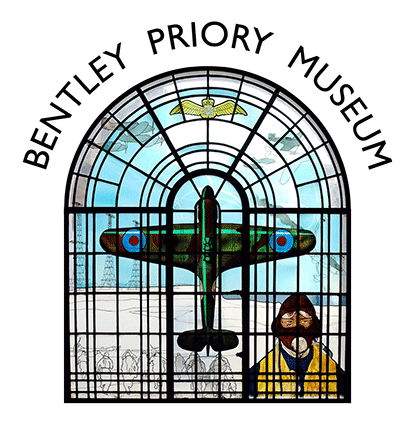
The use of radio waves to detect objects was first developed by British engineers in the 1930s and this new technology proved to be a useful tool during WW2. Radar could pick up incoming enemy aircraft at a range of 80 miles and played a crucial role in the Battle of Britain by giving air defences early warning of German attacks.

Pictured are the first four Polish recipients of the Distinguished Flying Cross (DFC) wearing their awards after a presentation ceremony by Air Marshal Sholto Douglas at RAF Leconfield, 15 December 1940.
Left to right – Squadron Leader Witold Urbanowicz, Pilot Officer Jan ‘Donald Duck’ Zumbach, Pilot Officer Mirosław ‘Ox’ Ferić and Flying Officer Zdzisław Henneberg.
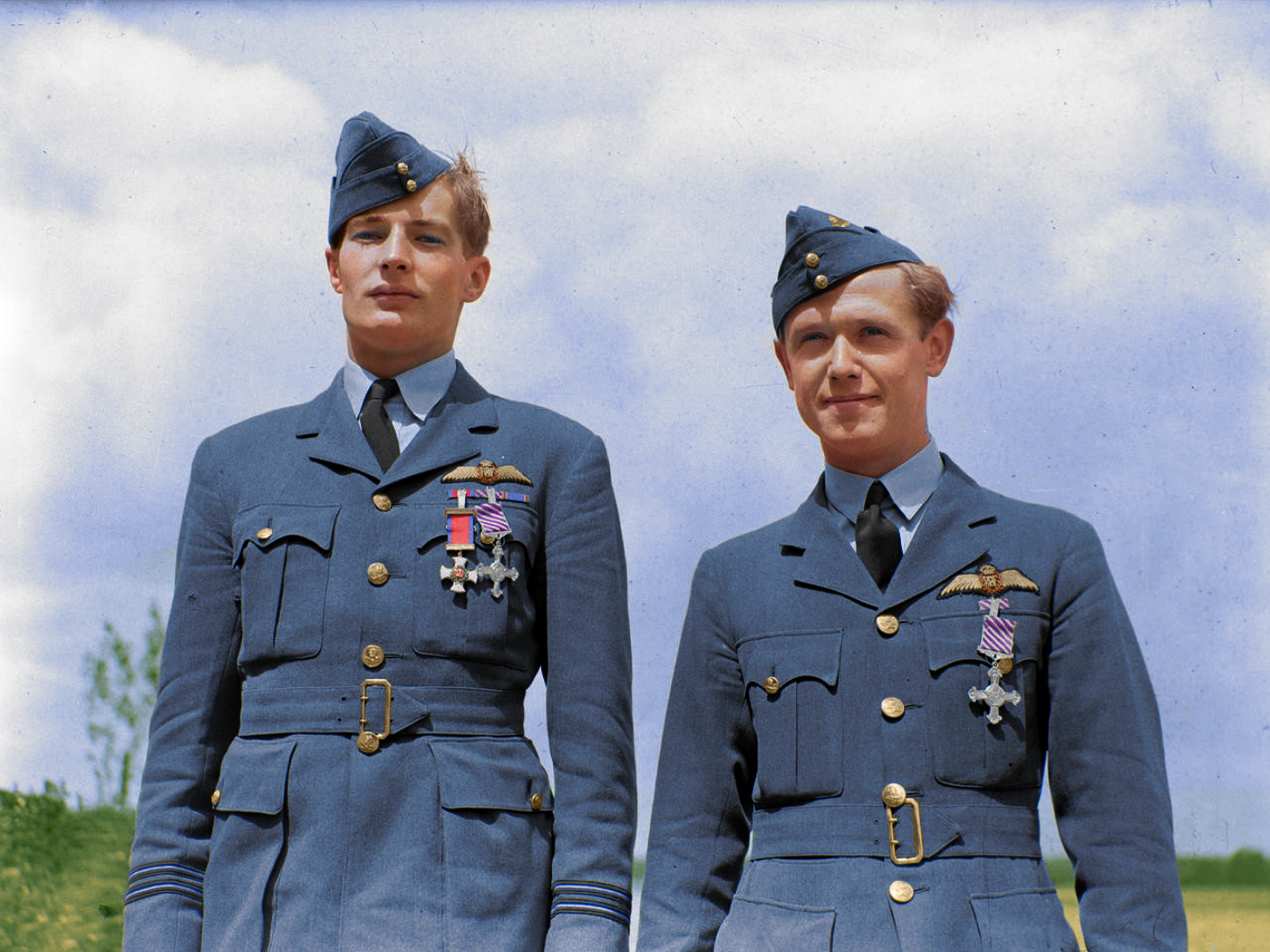
Flight Lieutenant R. H. A. Lee, after being awarded the DSO and DFC, and Flying Officer K. H. Blair after being awarded the DFC, by King George VI at RAF Hornchurch, Essex.
The awards were given for their distinguished service as fighter pilots with 85 Squadron. The Distinguished Service Order (DSO) was awarded for meritorious or distinguished service and the Distinguished Flying Cross (DFC) for acts of bravery whilst flying in active service against the enemy.
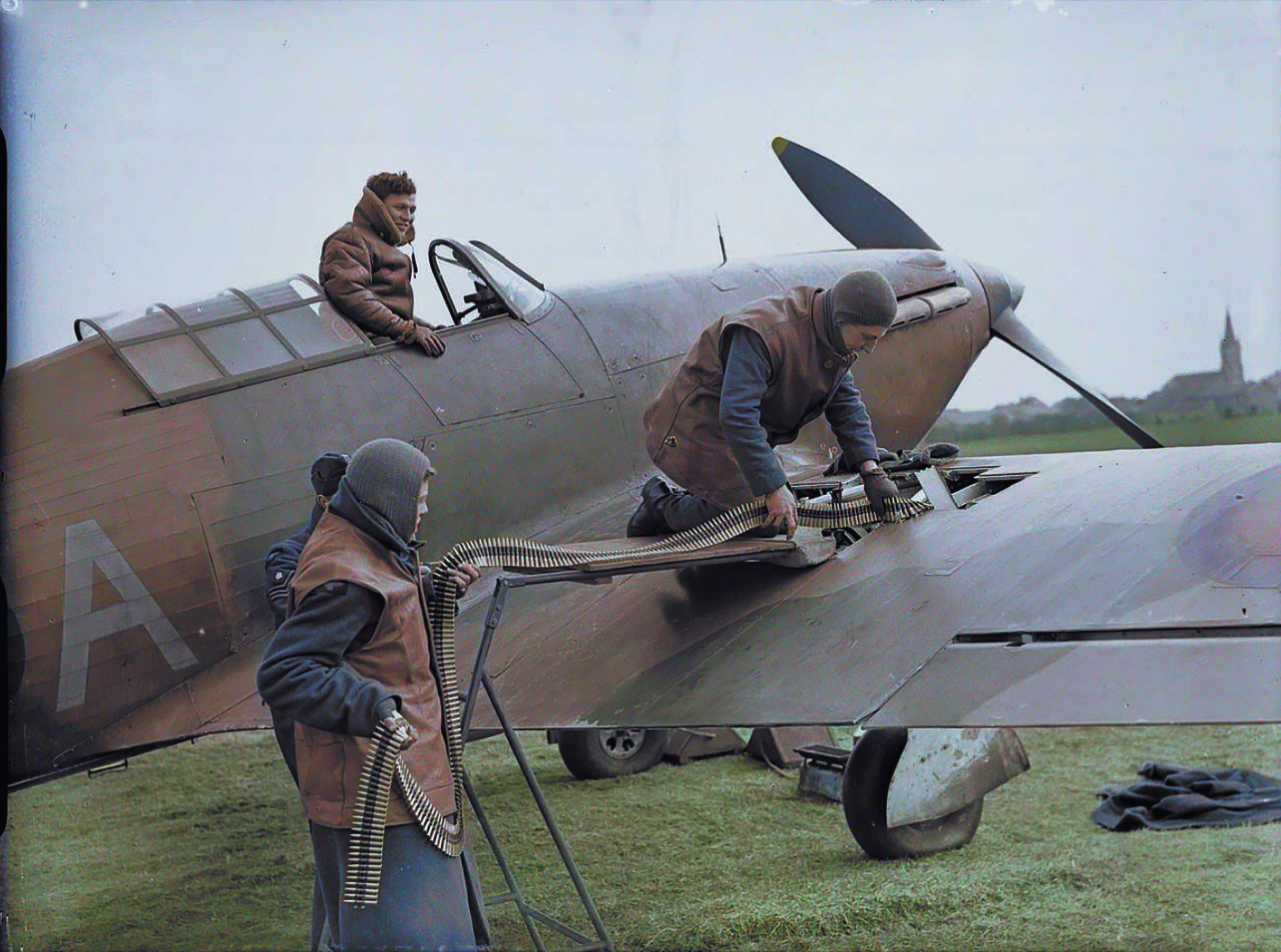
A Hawker Hurricane fighter is loaded with ammunition before a mission.
The Hurricane was flown by more than three-fifths of RAF’s Fighter Command squadrons, with over 14,000 manufactured during the Second World War.
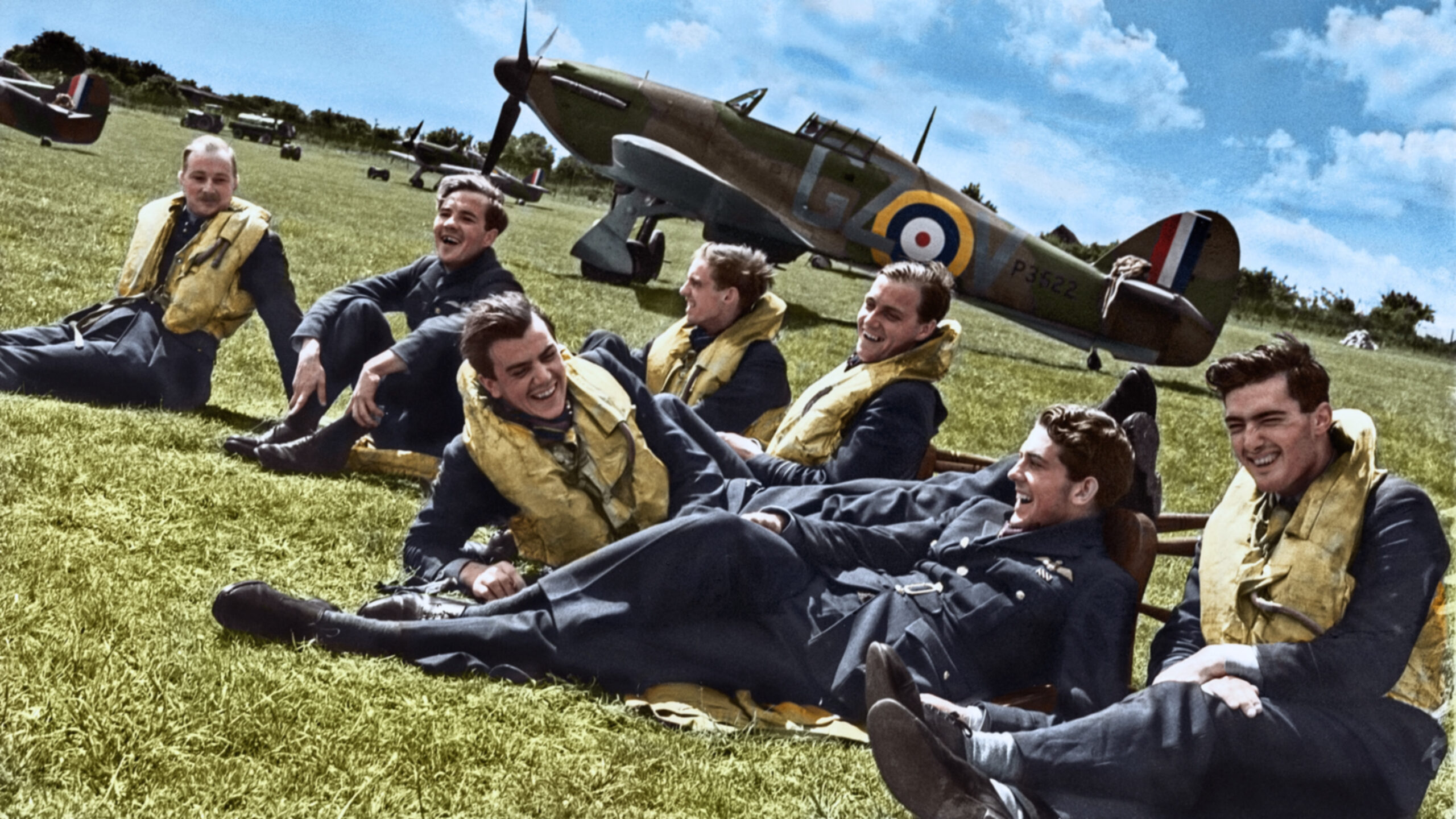
Pilots of ‘B’ Flight at RAF Hawkinge, Kent, 29 July 1940 (Hawker Hurricane GZ-V P3522)
32 Squadron were based at RAF Biggin Hill but operated daily from their forward airfield at RAF Hawkinge during the opening weeks of the Battle of Britain.
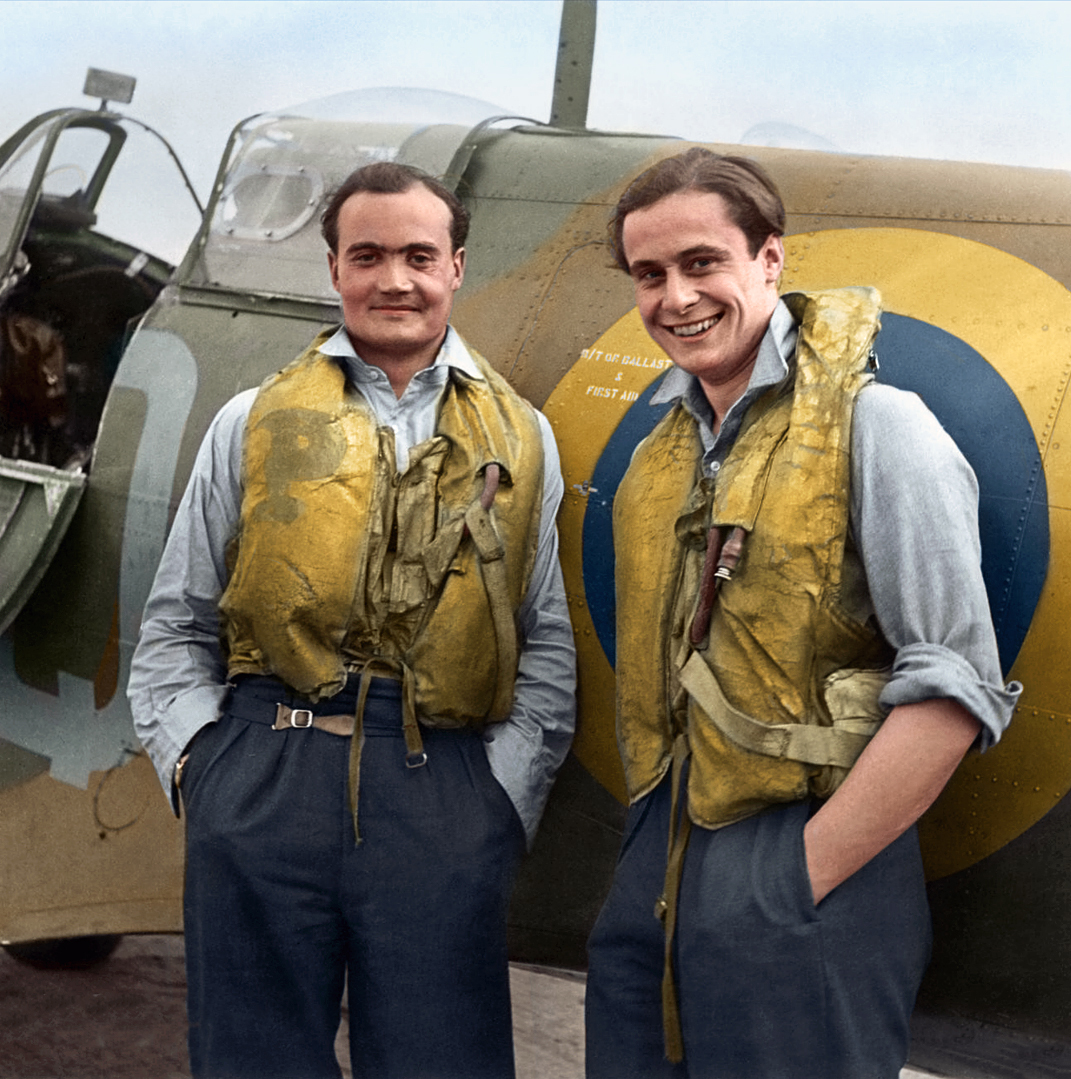
Flight Lieutenant Brian Kingcome (left), Commanding Officer of 92 Squadron and his wingman, Flying Officer Geoffrey Wellum, next to a Supermarine Spitfire. RAF Biggin Hill, Kent, June/July 1941.
The Spitfire, known for its speed and agility, became the iconic aircraft of WW2 with over 20,000 produced.
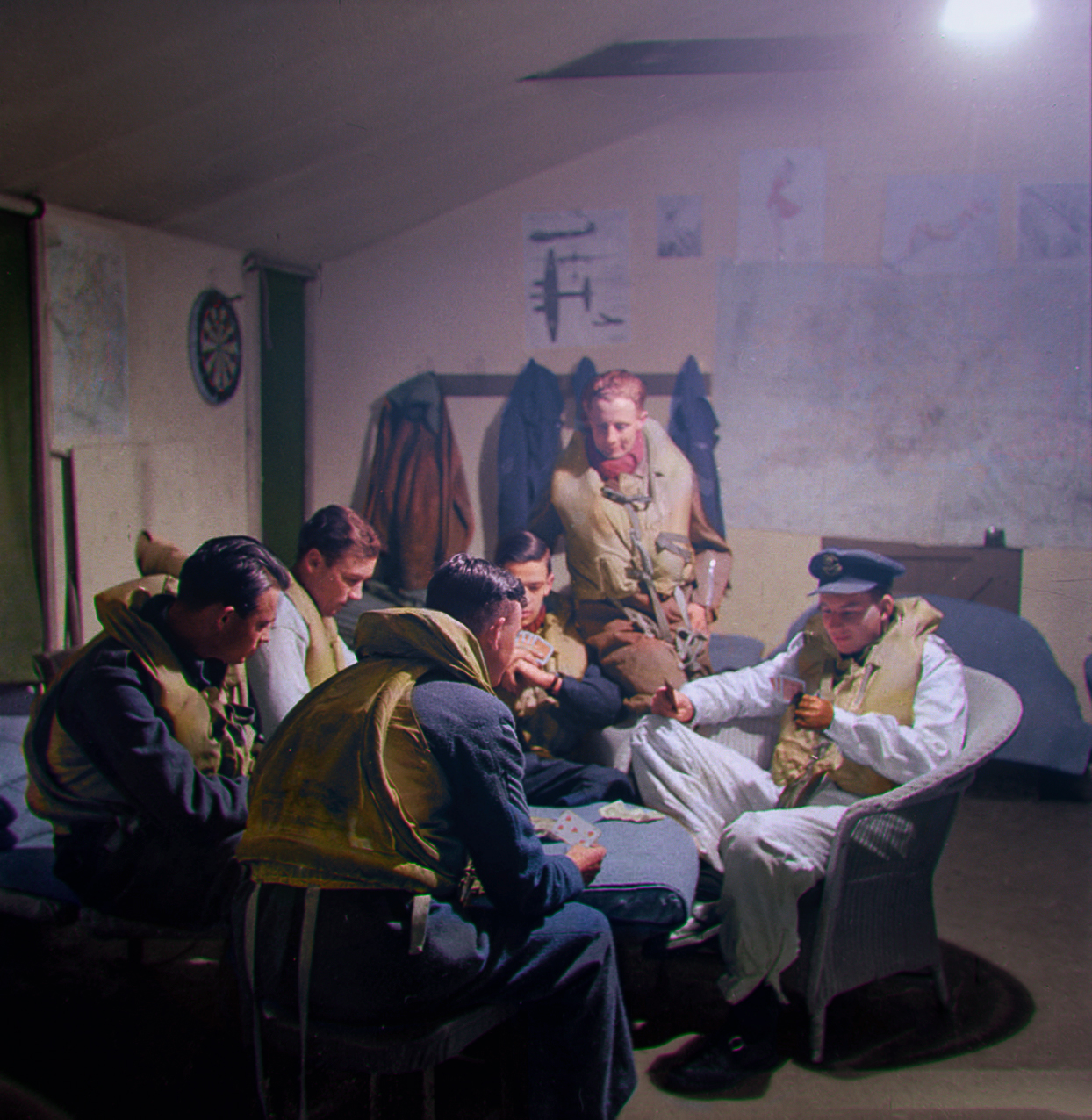
DFC & Bar, one-armed Commanding Officer of a night fighter squadron, playing cards with other pilots of 1 Squadron at RAF Tangmere, November 1941.
RAF Tangmere is famous for its role in the Battle of Britain. Its airfield had been enlarged in 1939 to defend the south coast against attack by the Luftwaffe, with the RAF commandeering the majority of the houses in the village.
On 16 August 1940 Tangmere saw its first and worst raid when hundreds of Stuka dive-bombers and fighters attacked, causing extensive damage to aircraft and buildings and killing 14 ground staff. Tangmere did not resume its status as a civilian community until 1966.
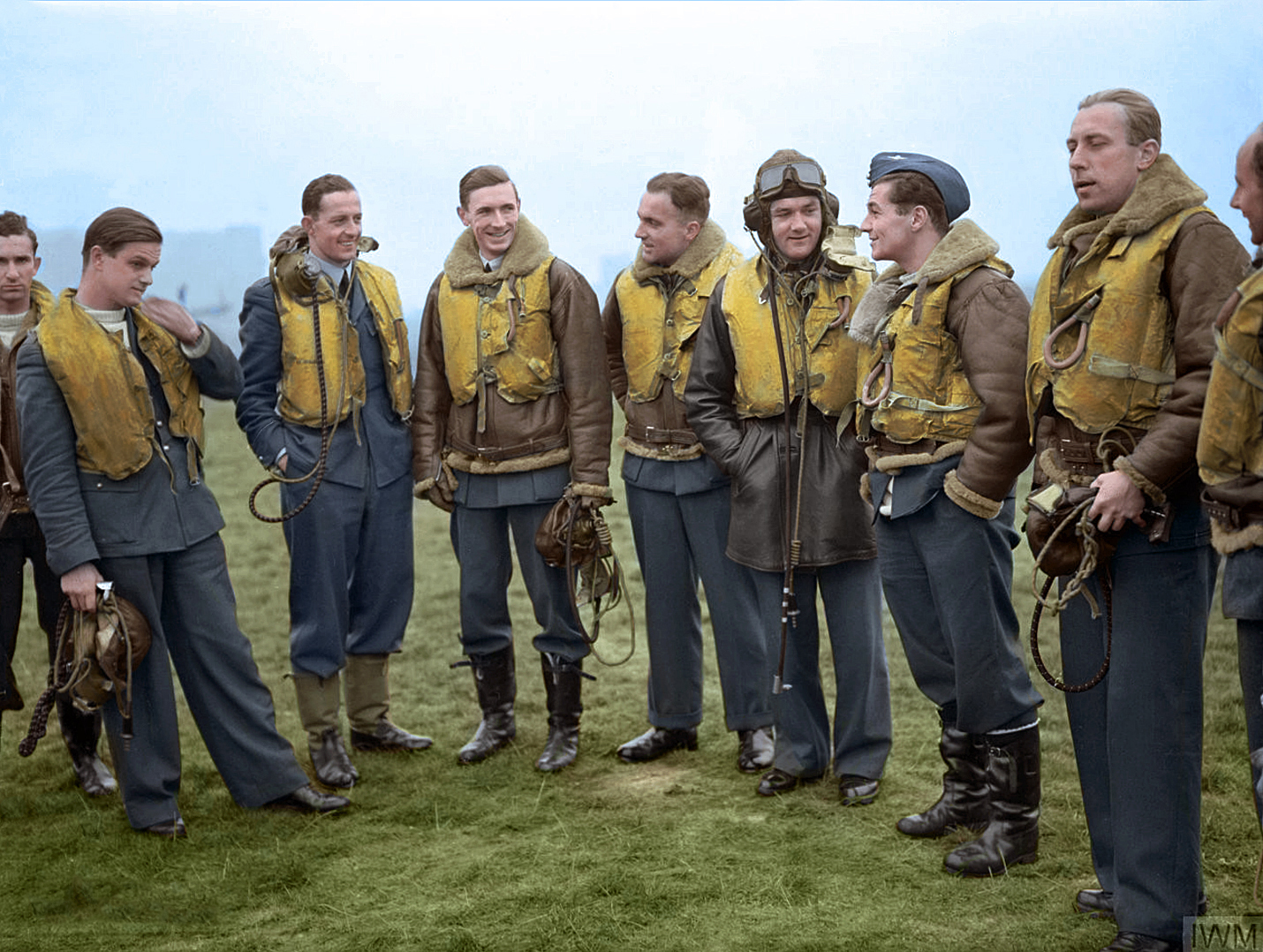
A group of pilots of 303 Polish Squadron during a conversation after returning from a fighter sortie at RAF Leconfield, 24 October 1940.
“Had it not been for the magnificent material contributed by the Polish squadrons and their unsurpassed gallantry,” wrote Air Chief Marshal Sir Hugh Dowding, Commander-in-Chief of RAF Fighter Command, “I hesitate to say that the outcome of the Battle would have been the same.”
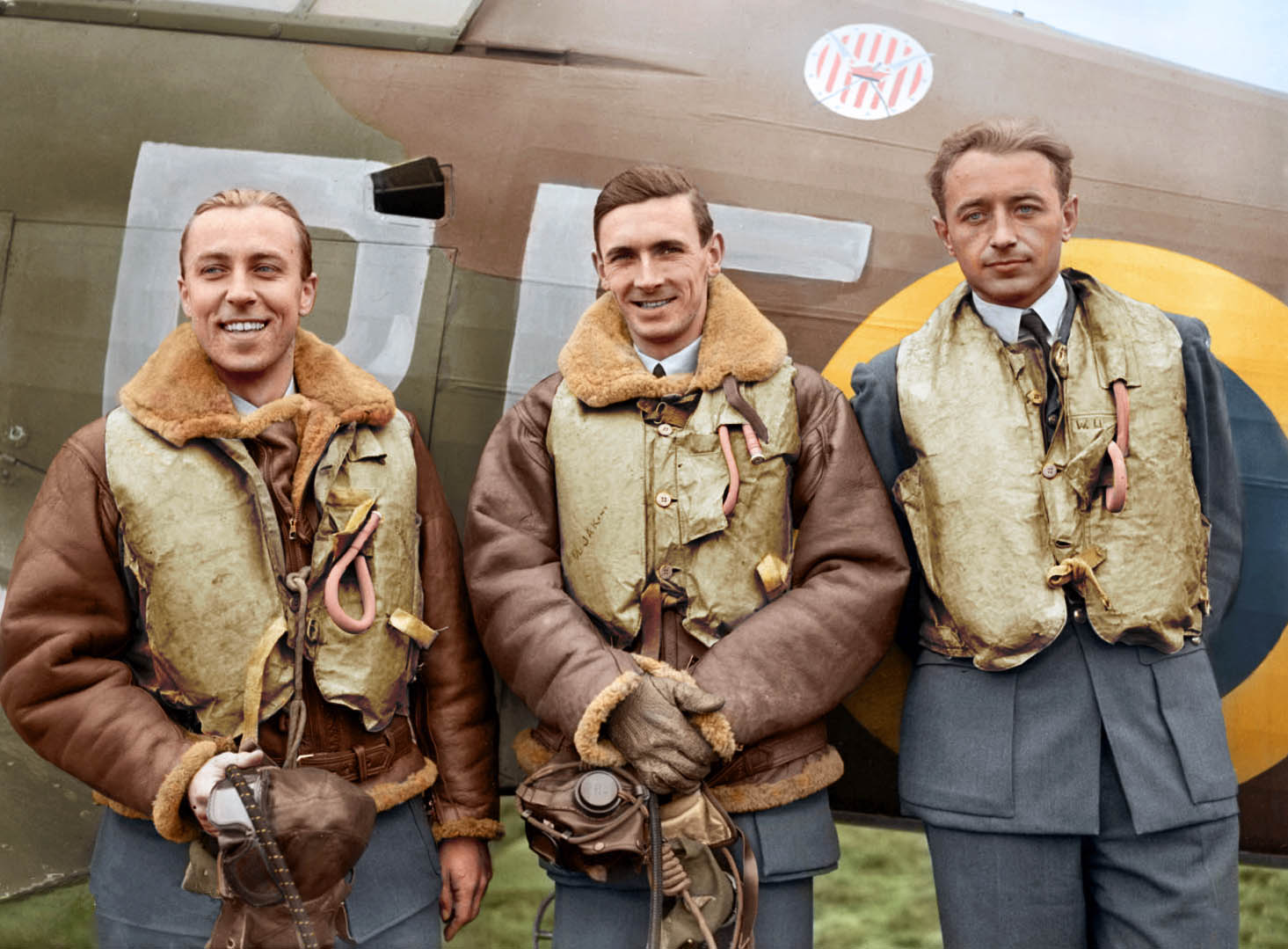
Flying Officer Zdzisław Henneberg, Flight Lieutenant John A. Kent ‘Kentowski’ and Flying Officer Marian Pisarek, standing by Hurricane Mk.I (RF-F, V6684) at RAF Leconfield, 24 October 1940.
Flying Hawker Hurricanes, 303 Squadron claimed the largest number of aircraft shot down of the 66 Allied fighter squadrons engaged in the Battle of Britain, even though it joined two months after the Battle had begun. At the time it was withdrawn for a rest on 11 October 1940, the squadron had claimed 126 kills in six weeks.
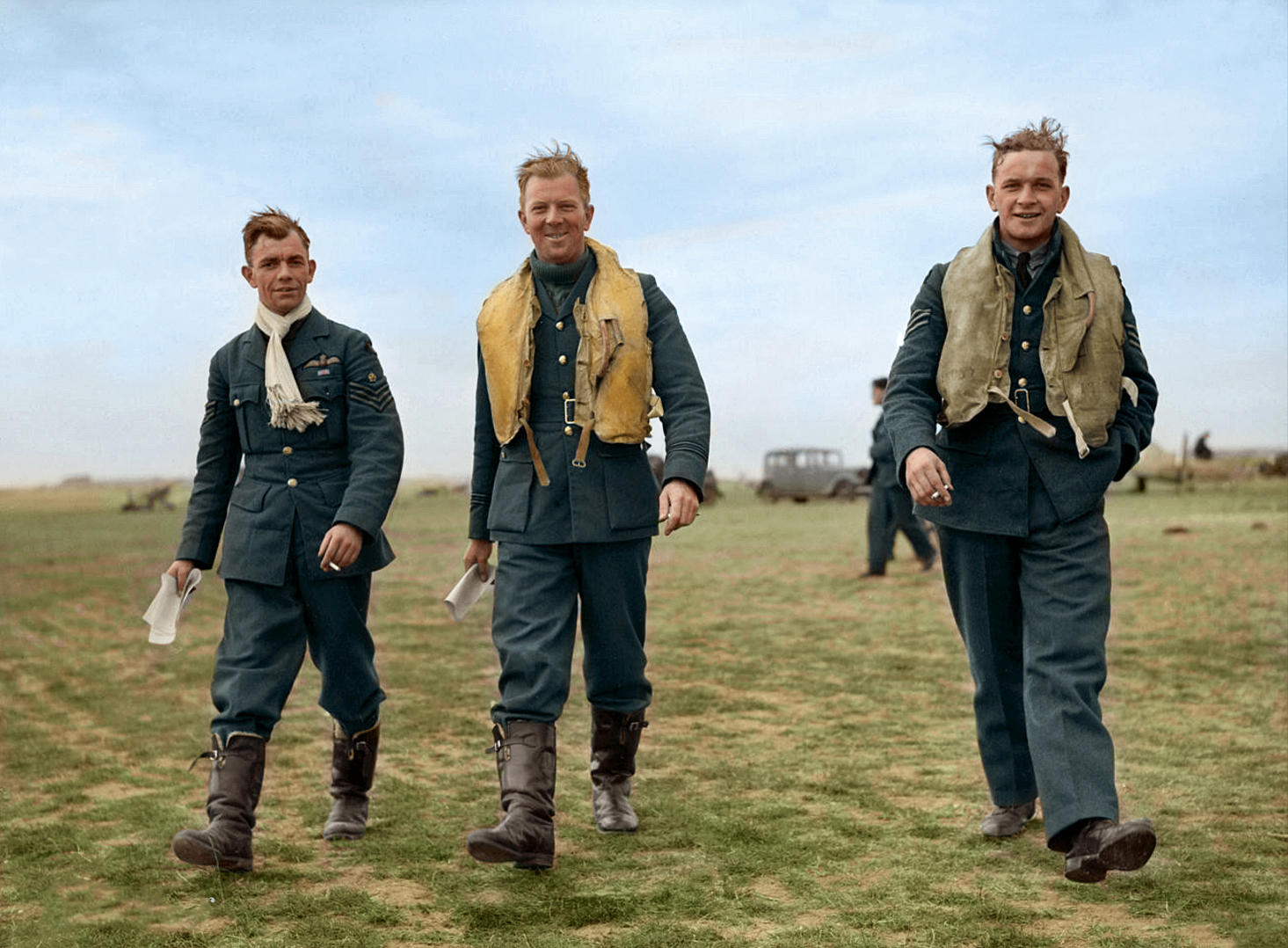
Flight Sergeant George Unwin, Flight Lieutenant Walter Lawson and Sergeant David Edward Lloyd at RAF Fowlmere, September 1940.
RAF Fowlmere was intended to be a satellite airfield for nearby RAF Duxford and was used by 19 Squadron with Supermarine Spitfires. 19 Squadron formed part of the Duxford Wing, 12 Group’s ‘Big Wing’ formation during the Battle of Britain.

 What’s On
What’s On Opening Hours & Admission
Opening Hours & Admission